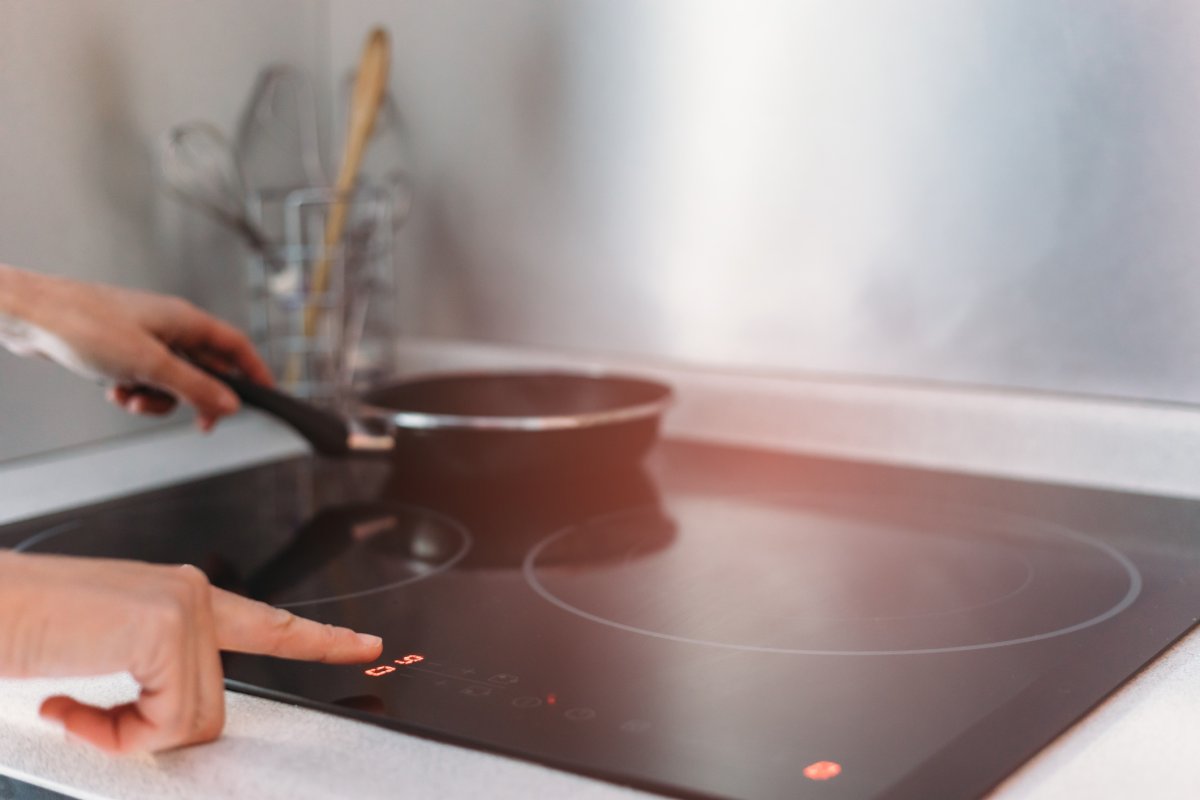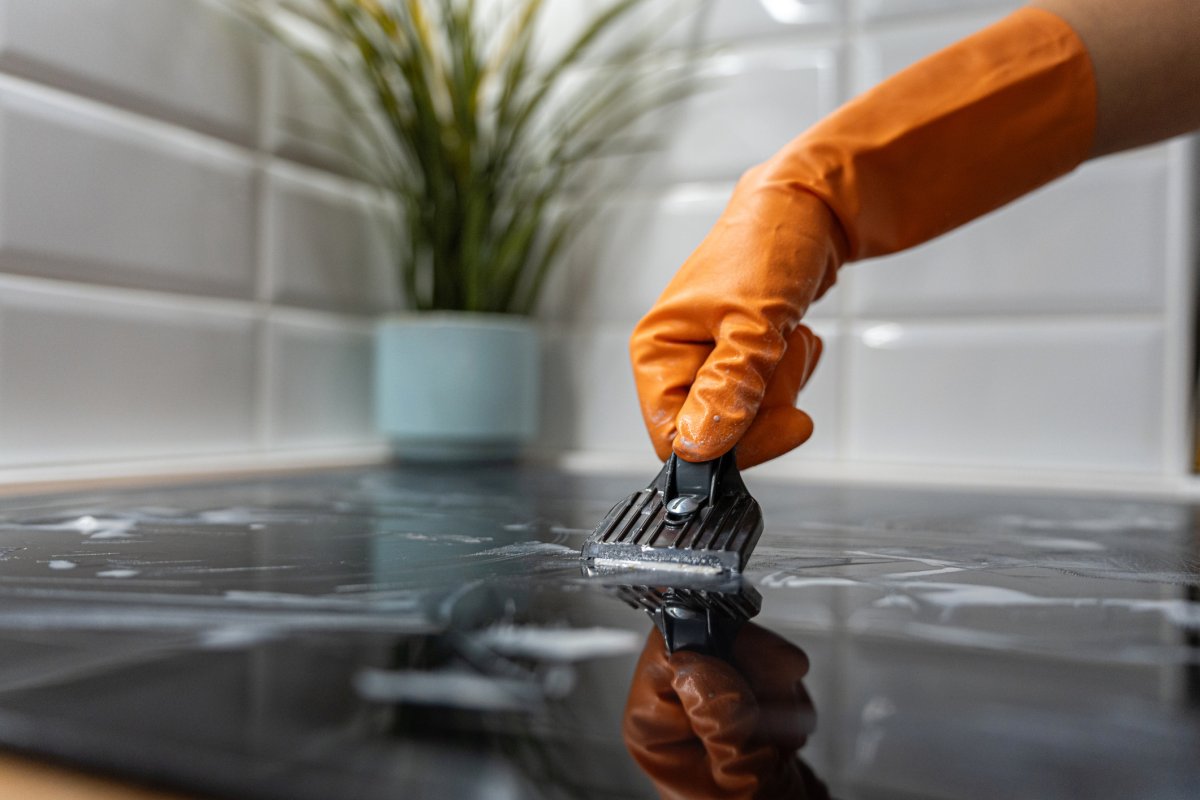

We may earn revenue from the products available on this page and participate in affiliate programs. Learn More ›
When it was time to pick out kitchen appliances during the construction of our new house, I was a bit hesitant to make the big switch to an induction stovetop. I grew up with gas burners and had always lived in homes with gas. But the current trend for new, modern kitchens is to install induction, so I took the leap into the unknown.
To help others who are weighing the pros and cons of purchasing an induction stovetop, I’ve outlined why I decided to go with induction this time, why I’m still not used to it, and tips for successfully using an induction stovetop with confidence and minimal frustration.
Why I Purchased an Induction Range
While it was recommended as the best option for its cutting-edge luxury appeal, the main reason I opted for an induction stove was because of its environmental benefits. Unlike traditional gas or electric stoves, induction cooktops use a coil that creates an electromagnetic field to heat pots and pans directly, providing precise temperature control and quicker cooking times. This process ultimately saves energy by creating very little excess heat and using less power to get the job done.
Additionally, the cooking elements on the stove heat and cool incredibly quickly, resulting in fewer carbon emissions than other types of ranges. I also considered recent reports about the health concerns associated with gas stoves that relate to poor indoor air quality; this helped push me in the direction of wanting to try an induction stove.

Why I’m Still Not Used to It
We moved into our new home 2 years ago, but I still feel like a newbie when I’m standing in front of my induction stove. The main reason for this is that the speed at which water boils still catches me off guard. I often find myself regretting that I didn’t stick around to watch the water boil. I am blown away by how rapidly an induction stove heats pots and pans. According to testing, food heats up and water boils 50 percent faster on an induction cooktop than on an electric or gas stove. Unfortunately, this often results in water—and sometimes the contents in the water—spilling all over the surface of the stovetop. And that means more work for me to clean it up.
Here are a few additional annoyances that I can’t seem to let go of:
- Fear of damaging or scratching the surface. The glass ceramic surface of an induction range is very sleek and smooth but also can be damaged easily from sliding pots and pans across the surface, especially if small pieces of food debris get trapped between cookware and the cooktop.
- Too many complex features. To be honest, I don’t even know all the bells and whistles of my induction range. There are settings for different types of cooking and ways to combine burners into larger surface areas that I don’t take advantage of. I still just stick to the basic features.
- It’s noisy. Another issue with an induction stove is that it makes a humming or buzzing noise while it’s on, which can take some getting used to.
- Some annoying safety features. Sometimes I want to start cooking, but the surface is locked due to an automatic safety feature that kicks in after a certain period. It requires holding down a touch-screen button on the surface for a few seconds to turn the surface back on. Of course, I can probably turn this feature off; I’ll just need to reread the instruction booklet.

Tips for Successfully Using an Induction Stovetop
I have learned a few tips and tricks over the past couple of years to better understand how to use an induction stove. Though the appliance requires me to make some adjustments when operating it, I am still happy with my decision, especially given the environmental benefits it provides.
- Test your cookware first. To use an induction stove, you’ll need pots and pans with a magnetic bottom. Many people think they automatically need to toss all their existing cookware, but that’s not necessarily the case. I was able to use what I already had. Just place a magnet on the bottom; if it sticks, your cookware is compatible.
- Keep the surface safe with silicone mats. I no longer worry about scratching the sensitive surface because I use silicone mats under cookware while it is sitting on the stovetop. This also helps to keep the surface clean.
- Stay nearby. Water boils extremely quickly on an induction cooktop, so stay close enough to the stove that you can monitor the pots and pans. It’s also helpful to turn down the setting to prevent it from getting too hot too quickly.
- Adjust to operating touch-screen settings. Most induction stoves use touch-based controls instead of traditional knobs and buttons. This means you’ll have to look at what you are doing to see the different setting options available and make sure your hands are dry and you aren’t wearing gloves. Otherwise, you won’t be able to operate the touch screen.
- Know how to clean it properly. The smooth surface of an induction stove needs to be handled with care to avoid scratches and other damage. Never use steel wool or abrasive cloths or cleaners when cleaning the induction stovetop. The best approach is to wipe the surface with a damp sponge or microfiber cloth. You can also purchase a special nonabrasive cooktop cleaner to remove spots and stains, and a ceramic top scraper to get rid of dried food particles.
